In the realm of mining, the adoption of diverse strategies is imperative to navigate the pressures of escalating production demands and uphold stringent quality standards in pursuit of lofty sustainability objectives. However, it’s lamentable that many mining enterprises fail to seize pivotal opportunities for enhancing their operational productivity.
For instance, numerous mining operations have yet to delineate clear-cut strategies for achieving precise Key Performance Indicators (KPIs) and boosting productivity. A prevalent issue is the fragmentation of data within mining companies, where measurements of quality and quantity in exploration lack a unified source of truth, inter-departmental workforce monitoring and planned exploration times are absent, Fleet Management Systems are suboptimal, and monitoring of machines, warehouses, and inventory remains decentralized.
Data fragmentation is exacerbated by the fact that production information resides with Mining Engineers, block data with Geologists, and budget forecasts with Mine Planners. Consequently, when other departments require access to this data, it’s often disseminated via email in documents such as Excel spreadsheets. However, when the original database is updated, these documents become outdated, leading to inaccuracies and decision-making challenges.
Such discrepancies can result in outdated information providing an inaccurate depiction of mine locations. In some instances, issues may go undetected, posing further challenges in the Value Chain. In other cases, erroneous data may prompt operators to waste time addressing non-existent problems.
Moreover, identifying discrepancies between mine plans and data can be arduous, making it challenging to trace their source and synchronize mine planning efforts. With materials sourced from various mine areas and blended in stockpiles, the reconciliation process can become needlessly complex.
Many mining operations still rely on manual data recording, often initially documented by hand and later transferred to Excel before being circulated via email. While functional, this method is error-prone and inefficient, presenting a significant constraint in manual systems.
Furthermore, this fragmentation creates departmental silos within companies, where vital information may remain inaccessible to other areas of the company, limiting its utility. Unfortunately, digitalization solutions are often overlooked.
By establishing a single, accurate source of information accessible to all across mining sites, integrated data platforms like Mine Operations Management (MOM) can enhance visibility, accessibility, and productivity. MOM not only improves mining operation efficiency but also contributes to sustainability efforts by reducing waste and energy consumption.
MOM serves as the linchpin for productive mining activities, integrating various software including operational control, material reconciliation (minimizing errors in material management), and asset performance management. This enables:
- Increased trust in data accuracy
- Support for a single database
- Improved forecasting capabilities
- Enhanced operational visibility
- Increased efficiency
- Serving as the foundation for sustainable operations
MOM allows users to directly connect to real-time monitoring and instrumentation, enabling geologists, mine planners, and mining engineers to automate data collection and display it on a unified platform. It not only addresses data input, storage, and distribution issues but also significantly reduces data fragmentation.
By creating a single, accurate source of information on one platform accessible to all across mining sites, integrated data platforms like Mine Operations Management can enhance visibility, accessibility, and productivity. This not only improves mining operation efficiency but also reduces waste and energy consumption, fostering more sustainable mining operations.
Mine Operations Management addresses all issues related to Supply Chain Management and Value Chain in mining operations, enabling users to track everything in a single data repository. This not only improves mining operation efficiency but also reduces waste and energy consumption, contributing to the creation of more sustainable mining operations.
The Mine Operations Management solution provides a portfolio of end-to-end applications across the mining value-chain in order to manage production performance in real-time and ensure compliance to plan. The solution allows to capitalize on operational data and produce actionable insights for faster & informed strategic decision-making. Like Data Management, Material Reconciliation, Operational Control & Assets Performance.
Mine Operations Managements can do:
Increased throughtput due to:
- Accuracy in data reporting
- Improved material balance reconciliation
- Re-capture of production losses
- Enchanced materials balancing & metals accounting (planned vs actual)
Reduction in indirect labor due to:
- Reduce manual interventation (data capture & manipulation) and automated analysis
- Automated & real-time reporting
- Unlocking time for other value-add activites
Grade variance due to:
- Short-interval control monitoring and long-to-short term ore control
Incresed visibility and agility due to:
- Integrated data flow (site-toHQ) & real-time reporting with actionable insights
- Timely & accurate information, allowing to anticipate & mitigate bottlenecks
- Centralized data management (single sourch of truth), enabling predictive decision-making
- The centralized & automated data capture, unlocking time for value-add activities



In the realm of mining, the adoption of diverse strategies is imperative to navigate the pressures of escalating production demands and uphold stringent quality standards in pursuit of lofty sustainability objectives. However, it’s lamentable that many mining enterprises fail to seize pivotal opportunities for enhancing their operational productivity.
For instance, numerous mining operations have yet to delineate clear-cut strategies for achieving precise Key Performance Indicators (KPIs) and boosting productivity. A prevalent issue is the fragmentation of data within mining companies, where measurements of quality and quantity in exploration lack a unified source of truth, inter-departmental workforce monitoring and planned exploration times are absent, Fleet Management Systems are suboptimal, and monitoring of machines, warehouses, and inventory remains decentralized.
Data fragmentation is exacerbated by the fact that production information resides with Mining Engineers, block data with Geologists, and budget forecasts with Mine Planners. Consequently, when other departments require access to this data, it’s often disseminated via email in documents such as Excel spreadsheets. However, when the original database is updated, these documents become outdated, leading to inaccuracies and decision-making challenges.
If you want to know more about Mine Operations Product, you can directly contact us at :
Author : Mirza Al Harits | Sales Representative – PT Arnoc Indonesia Energi

